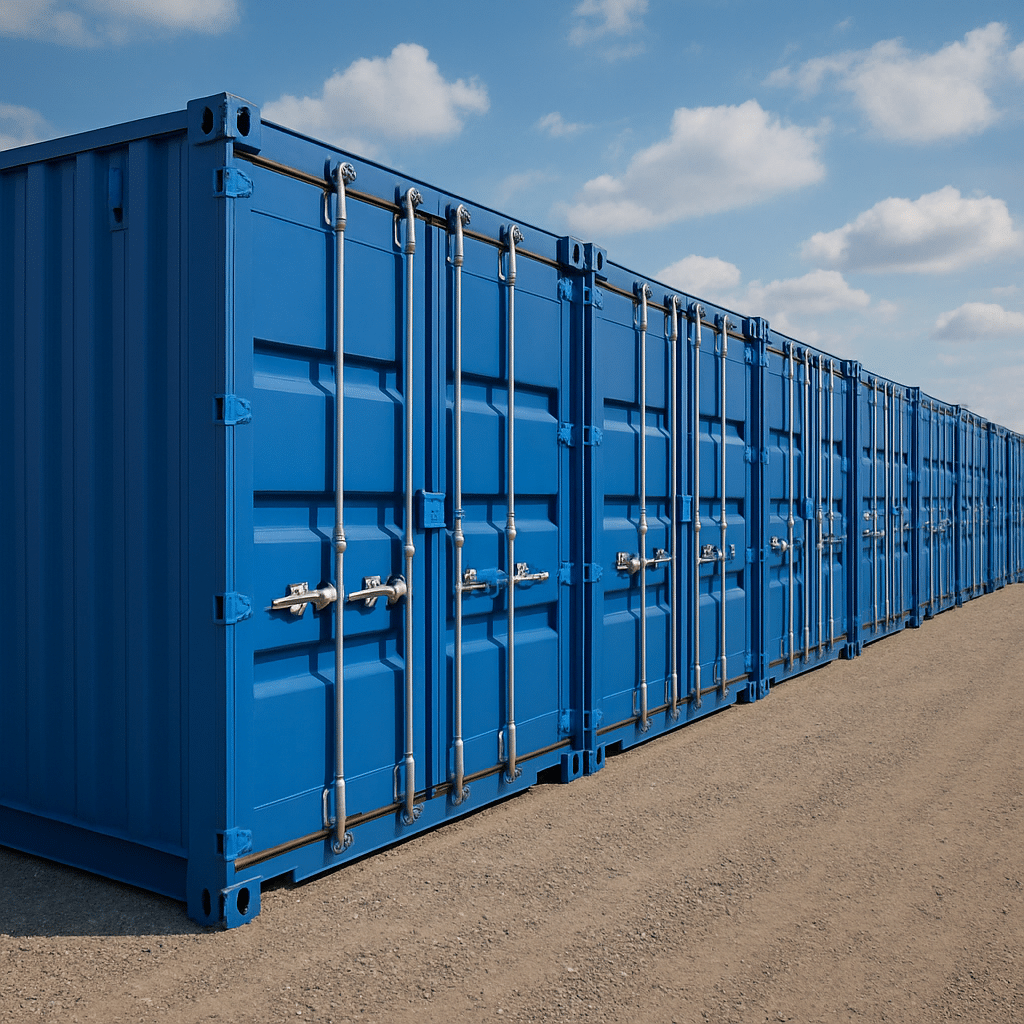
How to Turn Land into a Self-Storage Business Using Shipping Containers
A practical, step-by-step guide for landowners and entrepreneurs.
Step 1: Check Land Designation
Before anything, you need to know how your land is currently classified. This determines whether you need to apply for a change of use.
- Look at your Title Register or Local Plan Map (available through your local council or the Land Registry).
- You’re looking for the land’s Use Class. Agricultural or residential land will need permission to change to B8 (storage/distribution).
If the land is already classed for commercial or industrial use, you may skip the change-of-use step — but still check if planning is needed for placing containers.
Step 2: Consult Your Local Planning Authority (LPA)
Once you know the designation, contact your Local Planning Authority (LPA) to see if:
- A B8 use class is likely to be approved.
- The area fits with the local development plan.
- There are any specific restrictions (e.g., green belt, flood zone, protected habitats).
This informal pre-application enquiry can save time and money. Some councils offer it for free or a small fee.
Step 3: Hire a Planning Consultant (Optional but Helpful)
A professional planning consultant can:
- Prepare your application to professional standards.
- Anticipate objections and address them in advance.
- Liaise with the council on your behalf.
- Save you time and reduce the risk of refusal.
It’s not mandatory, but it’s highly recommended — especially if you’re unfamiliar with planning regulations.
Step 4: Prepare Your Planning Application
Your planning application should be clear, professional, and persuasive. It should include:
- Site Plan: A scaled map showing the layout, boundaries, access points, container placement, and any fencing.
- Access/Parking Layout: Clear vehicle access, turning space, and customer parking.
- Proposed Usage: A description of your intended use — e.g., “secure self-storage containers for rental to local businesses and residents.”
- Environmental or Noise Assessments: Required if your site is near homes, schools, or environmentally sensitive areas.
- Planning Statement: A short document explaining how the project complies with planning policy and why it’s suitable for the site.
Step 5: Submit the Application via the Planning Portal
Go to www.planningportal.co.uk and:
- Create an account.
- Choose “Change of Use to B8” and “placement of temporary structures” (shipping containers).
- Upload all plans and documents.
- Include supporting photos or design visuals if you have them.
Step 6: Pay the Fee
The application fee for change of use is typically:
- £462 in England (may vary slightly by region or if combined with other requests).
You’ll pay this through the Planning Portal or directly to the council.
Step 7: Wait for Consultation
The council will now begin a formal consultation period:
- Local residents and businesses may be notified.
- The council may consult Highways, Environmental Health, and Planning Policy teams.
- If there are objections, you may be asked for more info or to make adjustments.
This process usually takes 8 to 12 weeks.
Step 8: Receive the Decision
If approved, the permission may come with conditions, such as:
- Maximum number of containers
- Screening or fencing
- Operating hours
- Surface type (e.g., hardstanding required)
If refused, you have the right to appeal or revise and resubmit your proposal.
Step 9: Install Shipping Containers
Once approved, you can place your containers. Make sure to:
- Use wind- and water-tight units (WWT-rated)
- Install secure locks, CCTV, and lighting
- Maintain
